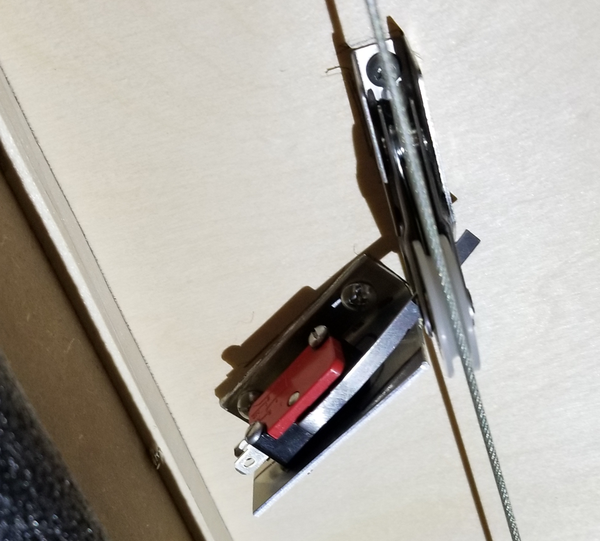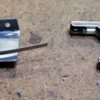I have the Mianne power lift bridge, but one thing bothers me, and it's already bit me. While the upper limit switch adjustment is not that critical, a 1/4" one way or the other on the upward travel isn't a big deal, the same can not be said for the lower limit switch! The adjustment of the lower limit is very touchy as you want the bridge to fully seat and be in alignment. However, the difference between it fully seating and turning off the motor and not quite seating when the motor stops is a tiny adjustment! Worse yet, a tiny adjustment in the wrong way and the motor happily unspools the cable and tangles it in the pulleys! That's what happened to me, and I don't really know why. I know the bridge was working fine and then one day it wasn't. Nobody was anywhere near the limit switches, but obviously something changed.
OK, time for a design enhancement. One "constant" is that the cables that lift the bridge are under constant tension all the time until the bridge is fully down, then if the motor keeps running, the cable will first lose tension, and then bad things happen right after that! What if I could simply sense when the cable is going slack? I could shut off the motor after the tension was lowered, but before the cable was fully loose and falls off the pulleys.
Here's my solution. Tim at Mianne graciously gave me a sample spring loaded pulley just like I needed at York for one piece of the puzzle. The other piece is a long arm microswitch and a mount to position it to sense when the slack starts to happen in the line. I got a bag of the microswitches on eBay for peanuts, I had the aluminum sheet stock.
The mounting bracked it just some 1/16" aluminum sheet that I hacked a mount out of. These two pieces mount under the lift bridge in the center where the cable slack will first be noticed. Here they are mounted in position, the switch senses the slack just as I intended.
All that's left is to get the proper wire to run the limit switch over to the lift bridge and crimp a couple of terminals on it.
I think this will enhance the reliability of the bridge, and will also allow it to positively fully seat in the down position.








